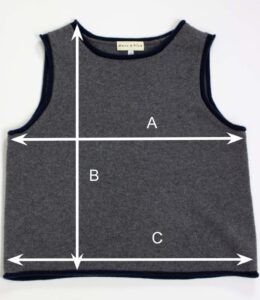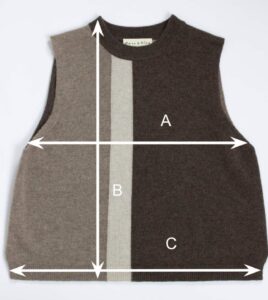Laundry symbols – a comprehensive guide to understanding washing symbols
Table of contents
- The general rules of laundry symbols
- Washing symbols instructions
- Bleaching symbols instructions
- Drying symbols instructions
- Ironing symbols instructions
- Dry clean symbols instructions
- What can you find on our washing labels
I’m sure you’ve noticed that we often repeat “check the label” in our articles. And maybe you did check it already. What did you see? A square with a line inside? Maybe a triangle with two lines? Or something reminiscent of a parking sign?
If so, you may be confused.
Those weird drawings are fortunately not hieroglyphics, but laundry symbols. They are put on clothing labels to tell you essential things you need to know about your garment. These laundry symbols guide what you should and should not do when you wash, dry, and iron your clothes.
After this guide, you’ll be able to easily understand the laundry symbols’ meanings.
Let’s start learning about washing instructions symbols, shall we?
The general rules of laundry symbols
Although they may appear kind of random at first, washing symbols are actually very well structured. In this section, we’ll talk about the general rules they follow, and later on in the article, we’ll discuss them in greater detail.
Let’s start with the basics.
Washing symbols on clothes are categorized into five categories, each one represented by a different main symbol. These are:
- Bathtub – Machine & Handwashing
- Triangle – Bleaching
- Square & square with a circle – Drying
- Iron – Ironing & Steaming
- Circle – Dry cleaning
And if you see any symbol marked with a large X, that means to NOT do whatever the symbol represents. It’s a warning signalling that a specific activity could damage your garments.
Now with the basics out of the way, let’s start with the first symbol, the bathtub.
The bathtub laundry symbol explained – washing instructions
As mentioned above, the bathtub symbol signals how we should approach washing our clothing.
First off, let’s differentiate between hand washing and machine washing. A bathtub symbol with a hand reaching into it means that the garment should be hand-washed. A regular bathtub laundry symbol means that the clothing can be machine washed without issues.
But just knowing something can be machine washed is not really enough. That’s where additional symbols come into play.
Dots and numbers inside the bathtub laundry symbol give information on the temperature of the wash:
- One dot, or 30° – Wash in cold water
- Two dots, or 40° – Wash in warm water
- Three dots, or 50° – Wash in hot water.
Keep in mind that these numbers show the temperature in degrees Celsius. For degrees Fahrenheit they would be 85°, 105°, and 120° degrees Fahrenheit respectively. This is important to remember as cashmere and woollens can shrink in high temperatures.
The bathtub laundry symbol also gives instructions on which washing cycle the garments should be cleaned:
- Base symbol – Normal cycle
- One horizontal line underneath – Permanent press cycle
- Two horizontal lines underneath – Delicate/gentle cycle
There is one more symbol that’s connected to washing, and it’s a bit of an outlier. It’s a symbol of a crossed-out twisted garment (which kind of also looks like wrapped candy). This washing symbol tells us to not wring the garment.
If you want to read a step-by-step comprehensive guide on how to wash cashmere, you’re in luck as we have one already. Read it to learn all the best practices for washing cashmere.
One category down, let’s get to another.
The triangle laundry symbol explained – bleaching instructions
This section will be a bit shorter as there are much fewer symbols in this category.
- A basic, empty triangle symbol – Any type of bleach can be used.
- A triangle with two diagonal lines inside – Only non-chlorine bleach can be used.
And like always, a crossed-out triangle tells you to not use bleach at all.
And that’s it for this laundry symbol meaning. Short, sweet, and simple.
Next up, is the square.
The square & square with circle laundry symbols explained – drying instructions
The primary laundry symbol for drying is the square, and the circle itself symbolizes dry cleaning as we said in the introductory section. So what’s the deal with the circle taking up the square’s space? This doesn’t seem fair and square.
Bad pun aside, the circle is used in some drying symbols, but not all. Think of it as an auxiliary symbol for the square. Important to note, if the circle is fully blacked out it indicates a no-heat dry.
To keep everything a bit more organised let’s start explaining the drying instruction symbols that only use the square. We have:
- Square with two diagonal lines in the top-left corner – Dry in shade
- Square with a horizontal line inside – Dry flat
- Square with three vertical lines inside – Hang and drip dry
- Square with a curved line on top – Line dry
And with the square portion of this section explained, let’s explain the square & circle laundry symbols. These give us information on how we should mashine dry our garments. And the symbols are:
- A circle inside a square – Tumble dry
- As above but with one horizontal line under the symbol – Permanent press cycle
- As above but with two horizontal lines under the symbol – Delicate/gentle cycle
Yes, just like it was with the machine-washing symbols. Here too, the number of lines tells us which cycle should be used when machine drying. And for both the one and two horizontal lines, we have the same cycle names for washing and drying.
Also similarly to the washing laundry symbols, dots inside circles also indicate the temperature setting which should be used. Just to refresh, here they are:
- One dot, or 30° – Dry in low heat
- Two dots, or 40° – Dry in medium heat
- Three dots, or 50° – Dry in high heat
And of course, if the machine dry symbol is crossed-out, don’t use dryers to dry that garment. You can learn all you need about drying cashmere from our article here.
And now, onto the ironing!
The iron laundry symbol explained – ironing & steaming instructions
Not all clothes need ironing or steaming. Cashmere itself is highly wrinkle-resistant. But sometimes you need to reinvigorate it, and it’s important to know how to do it.
The ironing laundry symbols are self-explanatory, especially if you’ve read the previous sections. Let’s start with ironing itself. The ironing laundry symbol comes in four variations:
- Empty iron symbol – Iron on no specified heat setting
- Iron with one dot – Iron on low heat (up to 110℃)
- Iron with two dots – Iron on medium heat (up to 150℃)
- Iron with three dots – Iron on high heat (up to 200℃)
As for steaming, it looks like the iron laundry symbol, but with dots or lines underneath it, symbolising steam. There are just “steam”, or “do not steam” variations, so let’s not dwell too long on that one.
Instead, let’s hop on to the last section. The circle laundry symbol.
The circle laundry symbol explained – dry cleaning instructions
And last but not least, the dry cleaning washing symbol. Represented by the humble circle. These symbols only give you an idea of whether or not an item can be dry-cleaned. It’s not a “dry clean only” symbol. A “dry clean only” information would be written somewhere on the label itself.
So, what types of dry-cleaning instructions can we find on a washing label? There are:
- An empty circle – can be dry cleaned
- A circle with the letter A in it – Any solvent can be used in dry cleaning
- A circle with the letter F in it – Trichloroethylene cannot be used as a dry cleaning solvent
- A circle with the letter P in it – Only petroleum-based solvents can be used in dry cleaning.
And like always, a crossed-out circle means that you should not dry clean this piece of clothing.
What can you find on our washing labels?

As you can see, our labels have the following symbols:
- Hand wash
- Use only non-chlorine bleach
- Dry flat
- Iron on low heat setting
- Dry clean only with petroleum-based solvents.
As we said, interpreting the meaning behind laundry symbols isn’t hard. And now, you’re practically an expert. If you haven’t yet, check out our Cashmere Care Guide for more detailed information on all of the aspects of caring for cashmere.



